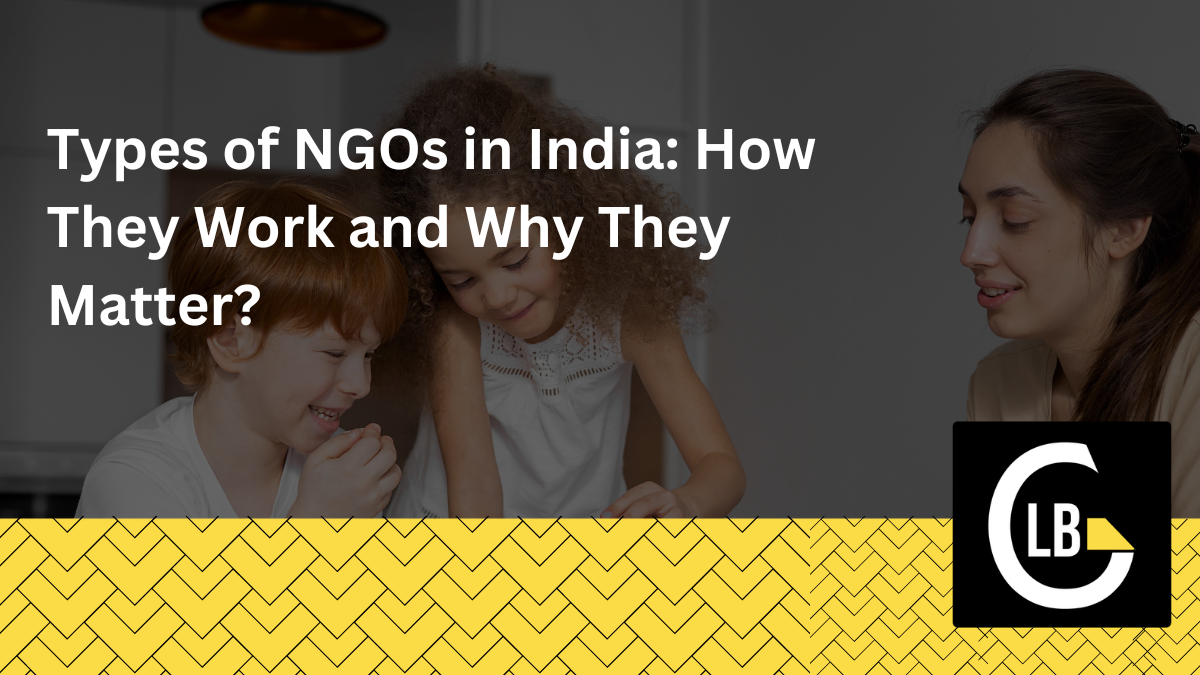India is a vast and diverse country with many social and environmental challenges. Non-Governmental Organizations (NGOs) have stepped up in many areas to help communities overcome these challenges. NGOs work independently of the government, providing support to people who need it the most. But did you know that NGOs come in different types? Each type has its own way of helping people and addressing issues.
In this blog, we’ll take a look at the different types of NGOs in India and explore the work they do to improve lives.
1. Charitable NGOs
Charitable NGOs focus on providing immediate relief to those in need, especially during emergencies like floods, earthquakes, or pandemics. They offer essential services like food, shelter, and medical care when disasters strike.
Examples:
- Goonj (provides disaster relief and works on rural development)
- Smile Foundation (focuses on healthcare and education)
What they do: These NGOs are often the first to respond when emergencies happen, collecting donations and using them to provide urgent help.
2. Advocacy NGOs
Advocacy NGOs aim to create long-term changes by influencing policies, raising public awareness, and campaigning for specific causes. They work on issues like human rights, environmental protection, and legal reform to make the world fairer and more sustainable.
Examples:
- Centre for Science and Environment (works on environmental policies)
- Human Rights Law Network (supports marginalized communities)
What they do: They push for changes in laws and public policies to address deep-rooted problems, often through research, campaigns, or legal action.
3. Service-Oriented NGOs
These NGOs provide essential services like healthcare, education, and skills training to people who don’t have access to them. They often work in rural or underserved areas, helping people build better lives through these services.
Examples:
- Pratham (improves education access for children)
- Helpage India (provides care and support for older adults)
What they do: They directly help people by providing services that improve their quality of life, filling gaps where government programs may not reach.
4. Community-Based Organizations (CBOs)
CBOs are smaller NGOs that focus on solving problems in specific communities. Often run by local people, these organizations understand their community’s needs and offer solutions that work best for them.
Examples:
- Self Employed Women’s Association (SEWA) (helps women gain economic independence)
- Kudumbashree (empowers women in Kerala through self-help groups)
What they do: CBOs help communities solve their own problems by providing localized support and empowering people to take action.
5. Environmental NGOs
Environmental NGOs focus on protecting nature and addressing issues like deforestation, pollution, and climate change. They work on projects that aim to preserve India’s rich natural resources and biodiversity for future generations.
Examples:
- Greenpeace India (fights against environmental degradation)
- Wildlife Protection Society of India (protects endangered wildlife)
What they do: These NGOs work on conservation projects, raise awareness about environmental issues, and pressure governments and businesses to adopt greener practices.
6. International NGOs (INGOs)
INGOs operate globally but work in India alongside local partners. They bring in international expertise and resources to tackle large-scale issues like disaster relief, health campaigns, or education programs.
Examples:
- Save the Children (focuses on children’s welfare and rights)
- Oxfam India (works on poverty reduction and emergency response)
What they do: INGOs collaborate with local organizations to address large problems by using international funding and experience to implement effective solutions.
7. Religious NGOs
Religious NGOs are often inspired by spiritual values but work to help people from all backgrounds. They engage in charitable activities like education, healthcare, and disaster relief, motivated by a sense of service to humanity.
Examples:
- Ramakrishna Mission (runs schools and healthcare services)
- The Art of Living Foundation (provides social services and promotes mental well-being)
What they do: These organizations mobilize volunteers and resources to serve communities through charity and social work, often drawing on strong support from religious groups.
8. Research and Development NGOs
Research-based NGOs focus on finding new ways to solve problems by conducting studies and experiments. They often work in fields like agriculture, healthcare, and energy, using their findings to influence policy and improve existing programs.
Examples:
- The Energy and Resources Institute (TERI) (focuses on sustainable development)
- M.S. Swaminathan Research Foundation (works on agricultural innovation)
What they do: These NGOs generate knowledge and develop innovative solutions that can be used by governments, businesses, or other NGOs to improve their work.
Conclusion
India’s NGOs come in many forms, each tackling a specific problem or working in a certain way. Whether it’s providing immediate help during a crisis, advocating for policy changes, or empowering communities to solve their own problems, all NGOs share the same ultimate goal—to make life better for people.
By addressing gaps where government services might fall short, NGOs play a key role in improving lives and driving change. Their work is crucial in building a more just, equal, and sustainable society.
NGOs in India are not just about offering help in the short term. They’re about making real, lasting changes that can transform lives and communities for the better.
